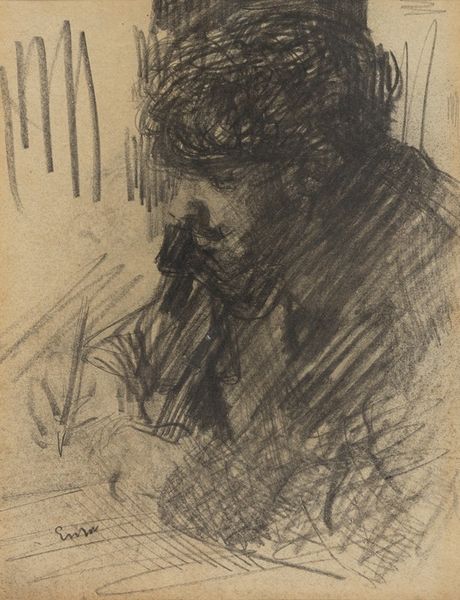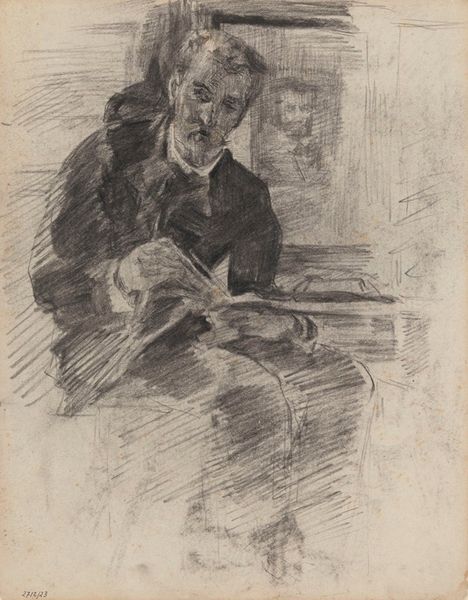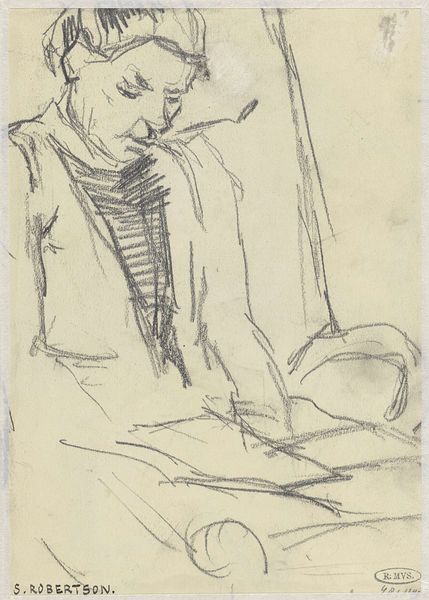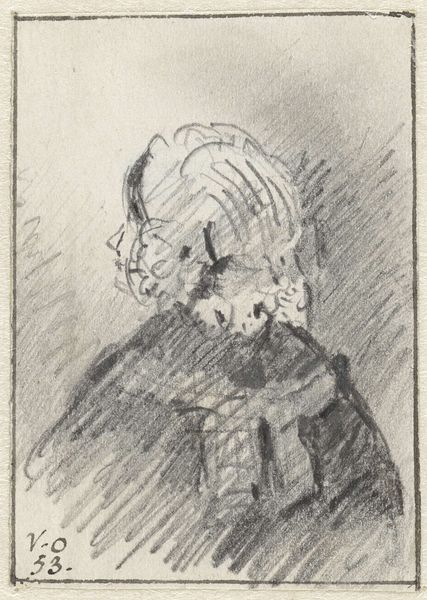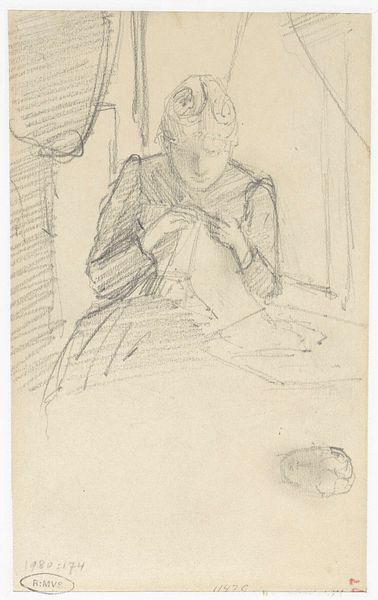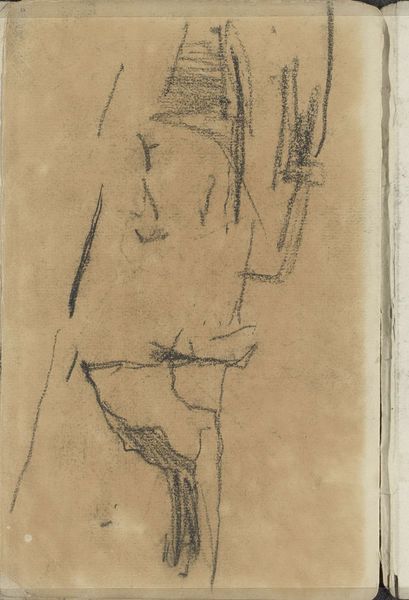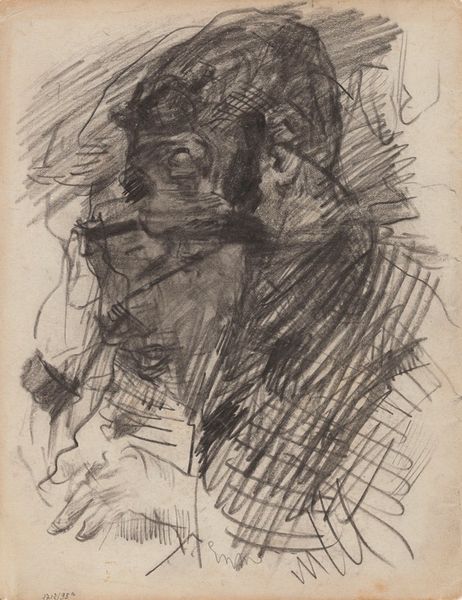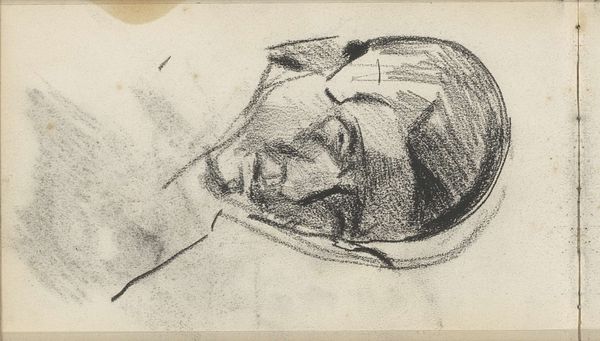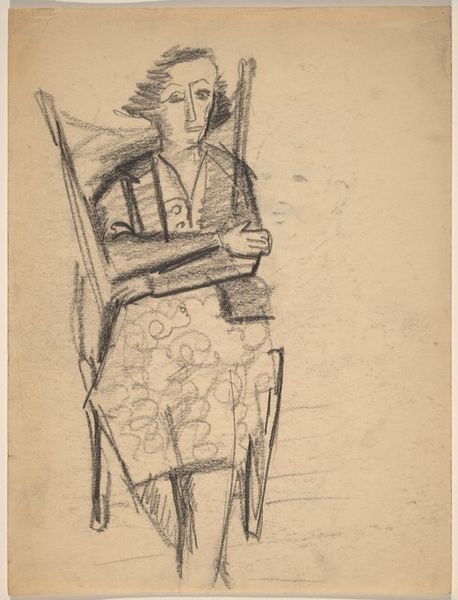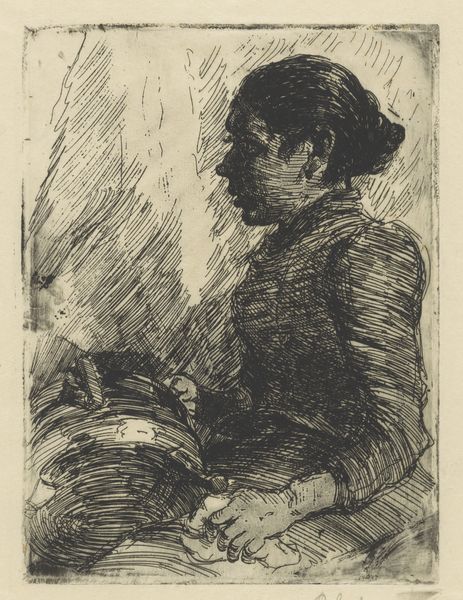
drawing, pencil
#
portrait
#
drawing
#
impressionism
#
pen sketch
#
pencil sketch
#
pencil
#
sketchbook drawing
#
northern-renaissance
Dimensions: height 192 mm, width 115 mm
Copyright: Rijks Museum: Open Domain
Editor: So here we have George Hendrik Breitner’s “Portrait of Destree,” a pencil drawing from 1885, housed in the Rijksmuseum. It’s very gestural, quite loose. The subject appears engrossed in some activity, maybe writing? How do you interpret this work, especially considering its form? Curator: The beauty of this sketch lies in the reduction to pure form. Note the density of the pencil strokes in the upper section compared to the more sparse, suggestive lines defining the figure’s body. Observe how the hatching creates tonal variation. Does the lack of precise detail distract, or does it enhance your understanding of the subject? Editor: I think it enhances it, actually. The unfinished quality creates a sense of immediacy. It feels like a fleeting moment captured, rather than a static portrait. Is that common with impressionist drawings? Curator: It's certainly a feature of impressionistic approaches, where the emphasis shifts from meticulous representation to capturing sensory impressions and movement. Focus on how Breitner used the pencil to render light and shadow. The suggestive lines contribute more to the overall image than careful shading and highlights might have done. Are we perhaps inclined to fill in the visual gaps and construct a narrative based on such fragmentary data? Editor: That's interesting – so the sketch’s incompleteness almost invites the viewer to participate in the creative process, becoming more engaged than we might be with a highly detailed work. Curator: Precisely. And that very act of interpretation underscores the subjective nature of perception itself, does it not? We see what we choose to see, guided by the artist's suggestive framework. Editor: I never considered a sketch in that way before. It shows how much a focus on form alone can reveal about our interaction with art. Curator: Indeed. And remember, the medium itself – the pencil, the paper – also contributes to the aesthetic experience. A digital reproduction will never fully capture that inherent materiality.
Comments
No comments
Be the first to comment and join the conversation on the ultimate creative platform.
